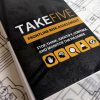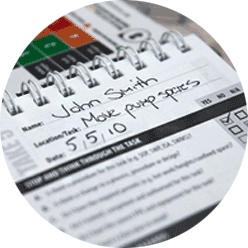 An effective front line risk assessment tool should be easy, simple to use and include targeted questions to help you identify hazards. Introducing the Pertrain Take 5 …
An effective front line risk assessment tool should be easy, simple to use and include targeted questions to help you identify hazards. Introducing the Pertrain Take 5 …
Over the years our clients have asked us to create various informal risk assessment tools similar to the TAKE 5 risk assessment books. From simple black and white stapled booklets to full colour multi-layered combination booklets encased in protective wallets.
Some examples of the safety note books Pertrain has been asked to develop, design and print are:
- SLAM (Stop, Look, Assess, Manage)
- SAM (Stop, Assess, Manage)
- STAR (Stop, Think, Act, Review)
- Step-backs
- Safety Observations
- SafeCheck
- Site Safety Assessments
- Hazard Reports
With this experience, Pertrain has developed generic TAKE 5 risk assessment books which have proven to suit most industries and work sites. Pertrain can easily customise these risk assessment tools to suit your organisation’s needs.
Although the questions and format might vary, the underlying purpose for all risk assessment tools remains the same – to keep you safe.
How to use the TAKE 5 books
Download this ‘How-to Guide’ on using TAKE 5 or check out the YouTube version.
How to do a Take 5
Introduction
Everyone has a responsibility to ensure their own safety and the safety of others.
Every work area or task poses a potential risk to personnel, property or the environment.
These risks are heightened when there is a change in work practices or environmental conditions. Managing these risks is the foundation of all safety and health management systems and can make the difference between completing a task safely or not.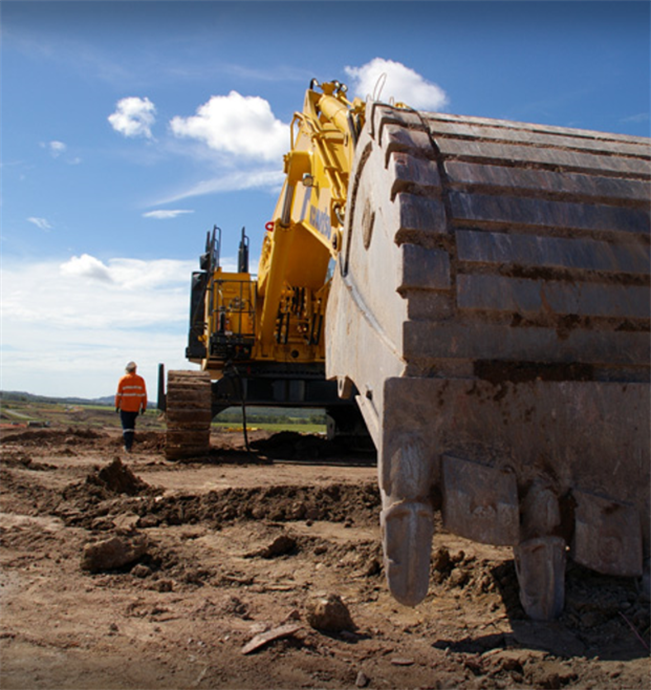
What is Risk Management

Risk management means looking at each specific task and determining the safest and best way to complete it.
Risk management is everybody’s responsibility.
One of the tools at our disposal in risk management is a TAKE 5.
A TAKE 5 is a personal risk assessment tool used to assist us in maintaining awareness of our environment at all times and aid in the identification and control of immediate hazards as we go about our day-to-day work.TAKE 5
The TAKE 5 risk assessment process is a simple and effective way to increase safety awareness and reduce the risk of an incident.
A TAKE 5 risk assessment involves giving a rating to the level of risk associated with an event, then putting in place controls to help remove or reduce the risk to an acceptable level.
The level of risk associated with an event can be established by assessing the chance of the event happening (Likelihood) and the potential harm or damage the event could cause (Consequences).
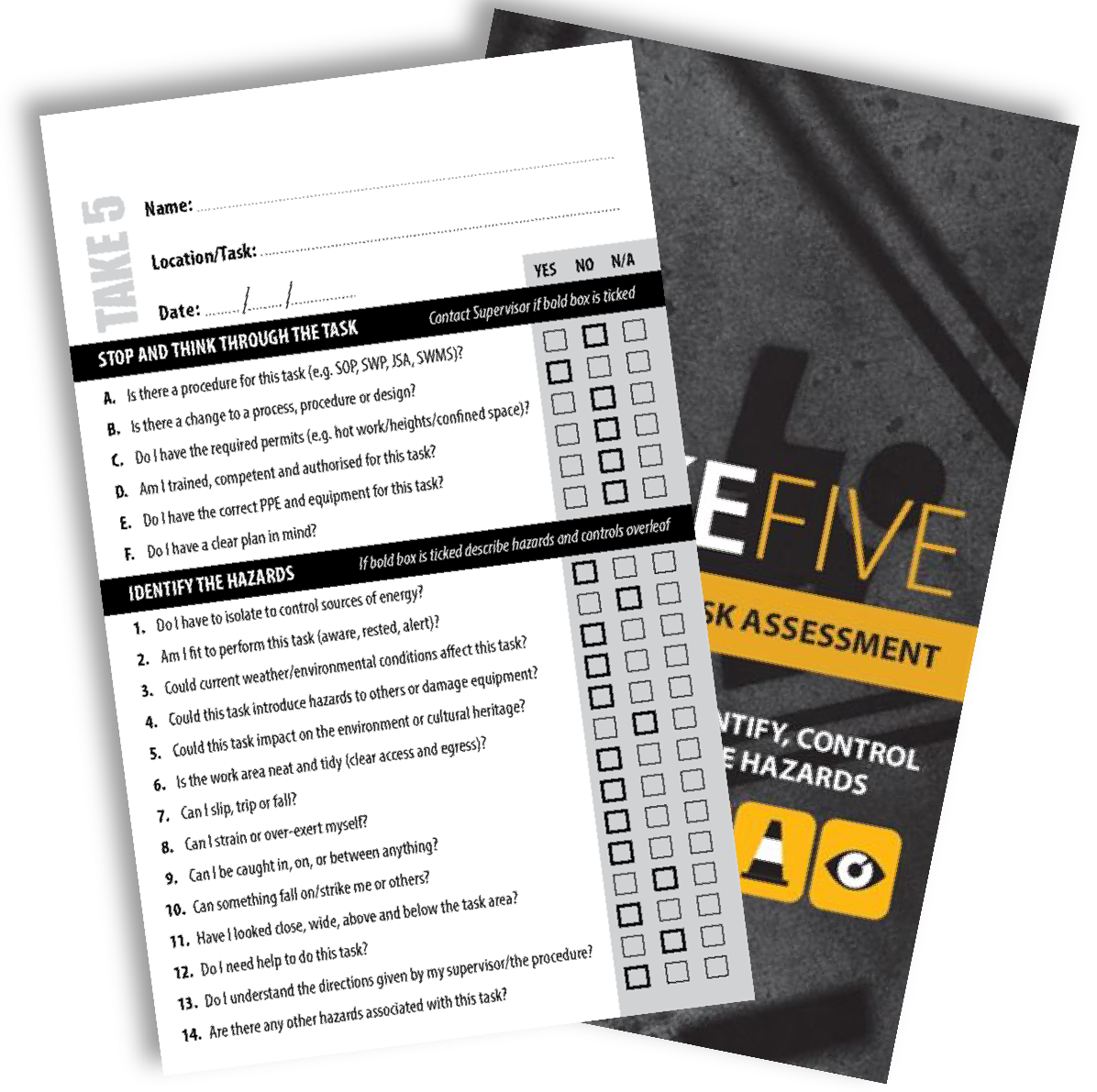
When should you do a TAKE 5?
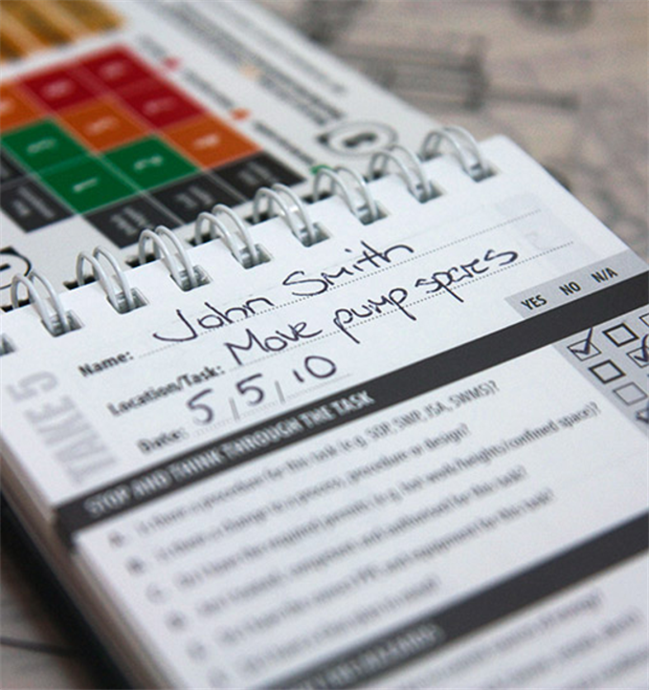
Complete a TAKE 5 before starting any task and during the task when there is a change in conditions (e.g. starts to rain).
The TAKE 5 booklet helps you identify risks to yourself, your workmates, equipment or property and the environment.
You can perform a TAKE 5 in a group but everyone should record the controls in their own books.
TAKE 5
The first section is easy.
Write down your name, the location/task and the current date.
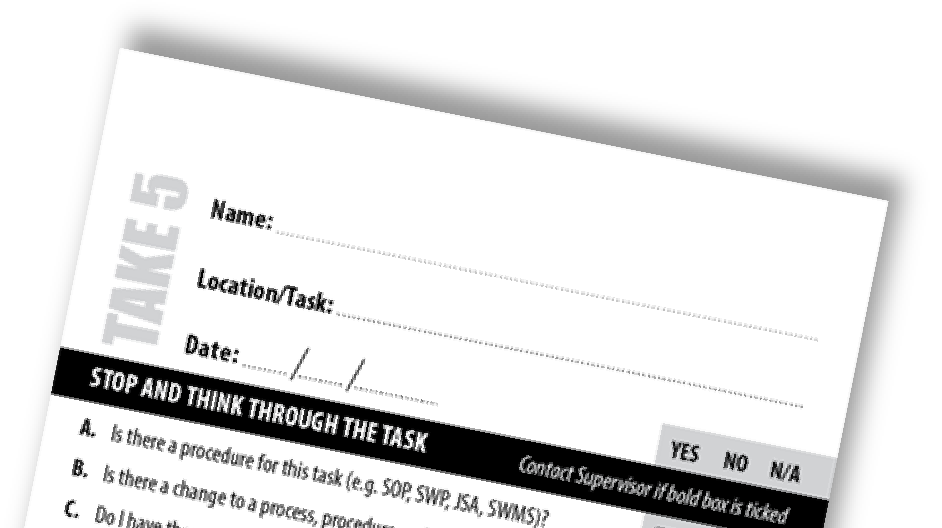
Stop and think through the task.
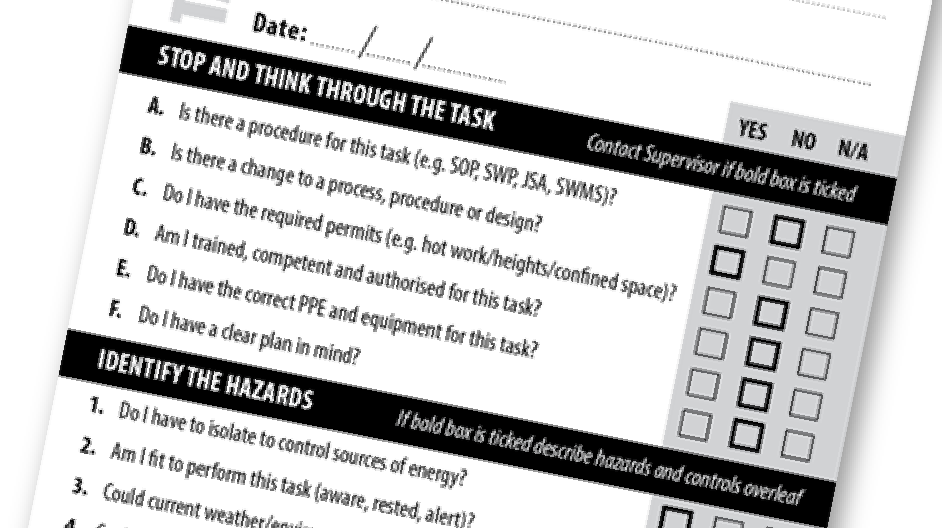
These six questions help to identify any relevant permits, procedures or training that must be in place or complied with before commencing the task.
Work through the questions and tick the relevant boxes.
What do the bold boxes mean?
As you work through the questions you will notice that some of the boxes are bolder.
If you ticked a bold box in this area, you must contact your supervisor.
Do not proceed with the task until the question has been addressed.
Is there a procedure for this task?
If a suitable procedure exists for this task tick ‘Yes’.
If the task is done regularly or if you believe a procedure or JSEA should be done then tick ‘No’.
Otherwise tick ‘N/A’.
Is there a change to a current process, procedure or design?
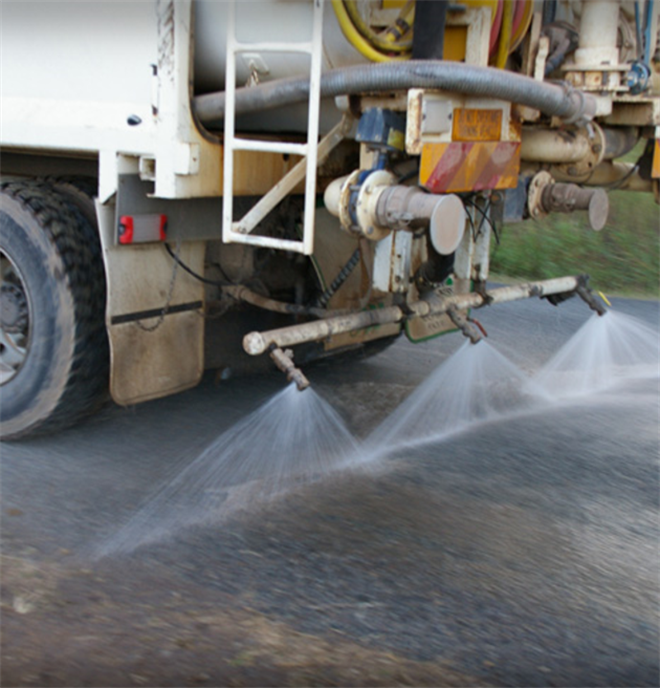
If you change the way the task is to be done, it is important to identify if there have been any new hazards introduced.
A change management process may be required.
Do I require a permit?
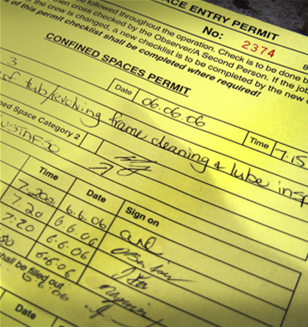
Some types of work are legislated as ‘High Risk’ and require additional controls and authorisation. These tasks can have their own separate permit processes.
- Hot work
- Work at heights
- Confined space
- Excavation
- Lifting
- Hazardous substances
- Working near road or rail
- Working near water
Ask your supervisor about the requirements for any high risk work you might have to do.
Am I trained, competent and authorised for this task?
You must be trained and authorised to perform certain tasks.
This may include electrical or mechanical work and operating some mobile or fixed equipment.
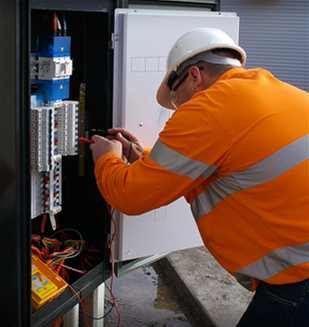
Do I have the correct PPE and equipment for the task?
Check your PPE and equipment to make sure it is fit for the task and safe to use.
Ask yourself if there are additional safety items required to perform this task?
- Breathing apparatus
- Hearing protection
- Life preserver
- Hat, sunscreen and extra water
Do I have a clear plan in mind?
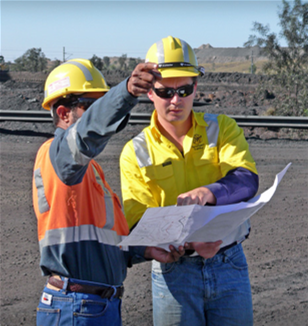
Have you thought through the task in detail?
Do you have a clear idea of what is required?
If you are unsure of anything – ask for clarification.
Identify the hazards
This step involves spotting any potential hazards in your work area.
These questions help you to identify any hazards that can pose a risk to yourself, others, property or the environment.
Ticking a bold box identifies a potential hazard.
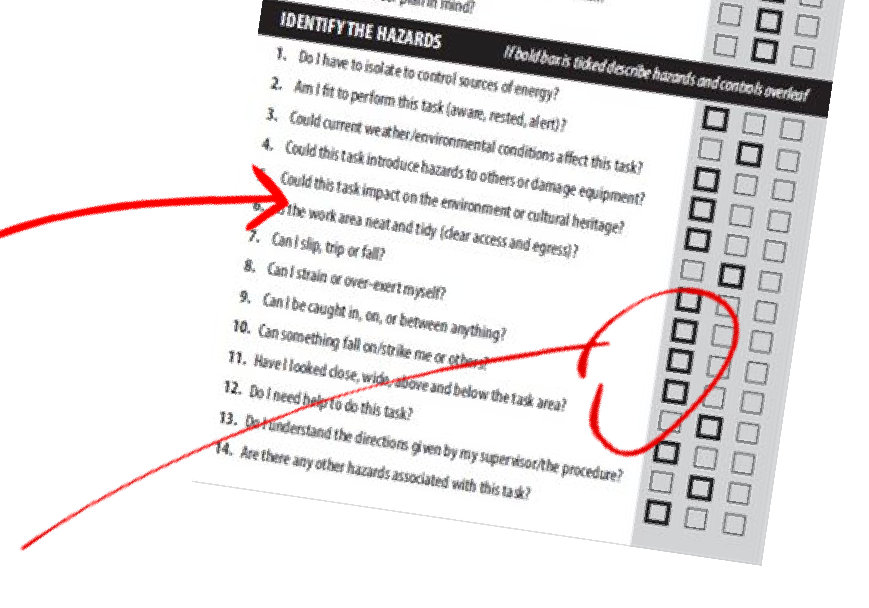
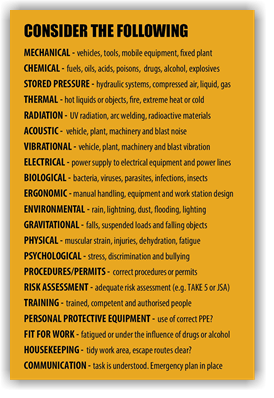
Consider the hazards listed in the back of the take 5 while looking around the work site.
When no hazards are found
If you did not tick any bold boxes then it is safe to proceed with the task.
However remember to monitor for any changes to the task or work area.
A change could introduce hazards so another TAKE 5 may need to be done, e.g. it starts to rain.
Controls
If you have ticked a bold box and identified a hazard. Describe the hazard/s on the back of the TAKE 5 sheet – be concise and clear.
Work out how best to control these hazards and write them down as well.

Hierarchy of Controls
Use the hierarchy of controls to control or eliminate the risks.
Some types of controls are more effective than others.
If you cannot eliminate the hazard (most effective) then you can always combine controls to lower the risk of an incident happening.
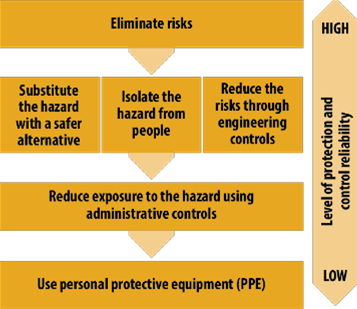
Calculate the Risk Rating
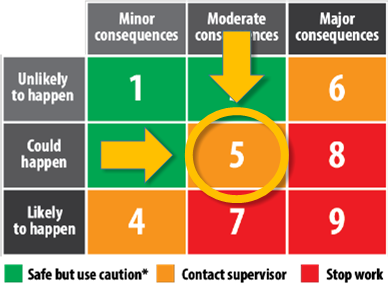
Use the risk matrix to help determine the risk score.
Choose how severe the consequence will be if the hazard causes an incident.
Then decide how likely it is that the consequence is going to happen.
The number where these two values meet is the risk rating score.
Risk rating
Using the risk matrix, record the risk rating.
In order to assess if your controls are working effectively, record the risk rating without and with the controls.

Do the controls make new hazards?
Check to see if your controls have created new hazards.
For example:
- Using water to keep dust down could create slip hazards
- Bringing in some lights could make a trip hazard with the cords
- Wearing full welding PPE could cause dehydration or heat stroke.
If by implementing all the controls all the risk ratings are 3 or below, you may proceed with the task.
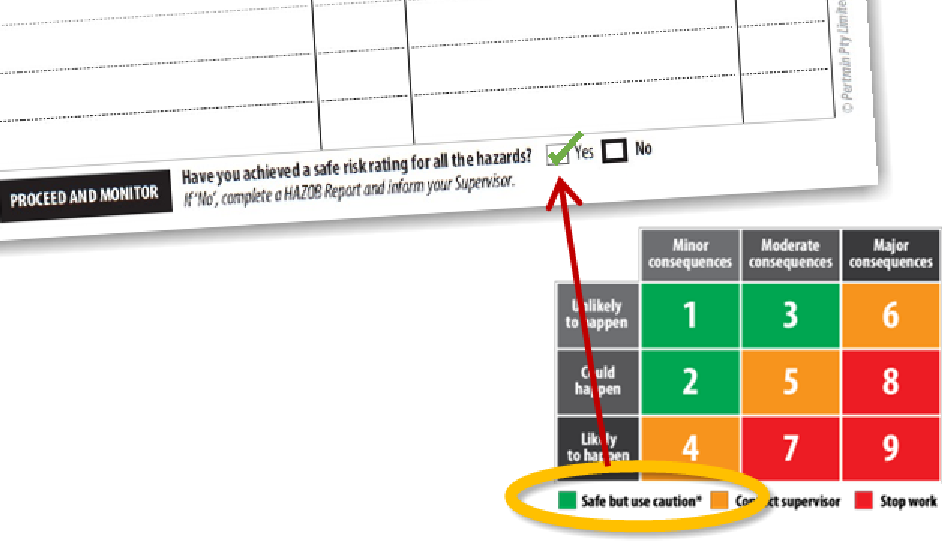
If the score is over 3, contact your supervisor.Together you might be able to create a solution to do the task safely.
Monitor
As you go about your work, continue to monitor the effectiveness of the controls and look for any changes to the task or work area.
A change could introduce a new hazard so another TAKE 5 may need to be done.
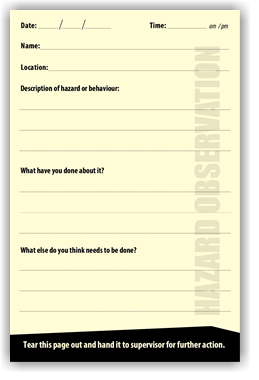
The HAZOB page is a tool for you to record and report the following:
- Hazard
- Potential hazard (near miss)
- Unsafe behaviour
- Safe behaviour
Fill in the form and give it to your supervisor.
Thank you
You have completed the TAKE 5 training presentation.




